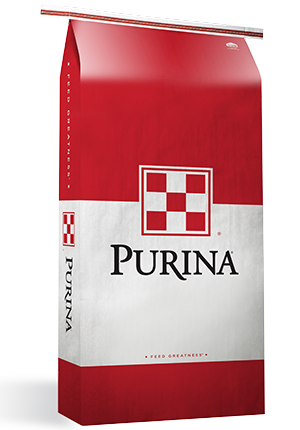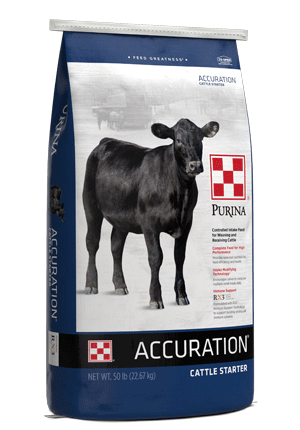
Diversify Income Opportunities with Multispecies Grazing

Sheep. Goats. Cattle. Multispecies grazing can provide many advantages to producers looking to mitigate risk, diversify their income and get more from their pastures, even when forage availability is limited.
Raising different species together is fairly common, and the practice has grown in recent years. Mixed species grazing gives farmers and ranchers another avenue for income.
Whether you currently raise sheep, goats or cattle, adding another species or incorporating multispecies rotational grazing to your operation could provide many benefits. Consider these factors when deciding if multispecies grazing is right for you:
Goats are browsers, favoring tree limbs and leaves over the high-quality, tender grass sheep and cattle prefer. Goats are also a great option for grazing land impacted by drought as they can forage on relatively little vegetation, giving you an additional income source without taking away the limited resources available for cattle or sheep.
Sheep can graze grass closer to the ground than cattle, so they can utilize forage cattle can’t. One watch-out with sheep is to avoid overgrazing, which could impact the long-term productivity of your pastures. Create a pasture rotation plan and use water or supplemental nutrition sources to spread out grazing activity to help reduce the risk of overgrazing.
Efficient forage use isn’t the only way multispecies grazing supports sustainable pasture management. Sheep and goats can help keep brush and invasive plants at bay, allowing for more grass growth for cattle and, in some cases, eliminating plants that could be toxic to cattle.
One option to address the differing copper needs is to feed all species a sheep mineral that’s low in copper and supplement cows and goats with a bolus product once or twice a year to meet their copper needs. Soil testing can help determine how often cattle and goats need copper supplementation.
Another option is sequential grazing, or rotating species through pastures separately rather than co-grazing. This allows you to provide each species with a mineral tailored to its unique nutritional needs and avoid the added labor of administering a bolus product.
A cow can only maintain herself and raise one calf every year. You could add 4-5 ewes and their babies on that same acre of ground, giving you another revenue source.
The number of animals you can raise per acre depends on many factors, including pasture quality, sequential or co-grazing management, water access and your market availability and goals.
Keep in mind reproduction rates differ by species. Sheep and goats reproduce more frequently and have more offspring than cattle. Consider how quickly your sheep or goat herd will grow and plan your stocking density accordingly.
Balance input costs and your projected return on investment to determine if multispecies grazing is the right choice for you. For example, fencing upgrades to keep smaller species in and help deter predators is one of the larger up-front considerations in terms of labor and cost.
Another consideration is veterinary care. Ensure your local veterinarian is comfortable caring for whichever species you intend to raise. Evaluate your handling facilities to ensure they can accommodate large and small animals and that veterinary care and other management activities can be done safely and efficiently.
For example, a cattle producer brings in sheep or goats from a different ranch for summer grazing. The cattle rancher benefits from weed control and pasture management while the sheep or goat producer benefits from access to high-quality pasture for their animals. It’s a win-win.
With some thoughtful considerations, multispecies grazing can be a great option to help mitigate risk, diversify your income and get more from your pastureland, whether you’re currently raising sheep, goats or cattle.
Raising different species together is fairly common, and the practice has grown in recent years. Mixed species grazing gives farmers and ranchers another avenue for income.
Whether you currently raise sheep, goats or cattle, adding another species or incorporating multispecies rotational grazing to your operation could provide many benefits. Consider these factors when deciding if multispecies grazing is right for you:
Sustainable pasture management
Sheep, goats and cattle are the perfect complementary species to graze together as a sustainable pasture management tool because they aren’t always competing for the same forages. Grazing any combination of these species can help you get more from your pastureland by turning ‘waste’ plants into meat, wool or milk.Goats are browsers, favoring tree limbs and leaves over the high-quality, tender grass sheep and cattle prefer. Goats are also a great option for grazing land impacted by drought as they can forage on relatively little vegetation, giving you an additional income source without taking away the limited resources available for cattle or sheep.
Sheep can graze grass closer to the ground than cattle, so they can utilize forage cattle can’t. One watch-out with sheep is to avoid overgrazing, which could impact the long-term productivity of your pastures. Create a pasture rotation plan and use water or supplemental nutrition sources to spread out grazing activity to help reduce the risk of overgrazing.
Efficient forage use isn’t the only way multispecies grazing supports sustainable pasture management. Sheep and goats can help keep brush and invasive plants at bay, allowing for more grass growth for cattle and, in some cases, eliminating plants that could be toxic to cattle.
Copper supplements for goats, cattle, and sheep
One reason producers hesitate to implement mixed species grazing is goats and cattle have a significantly higher copper requirement than sheep, which are very copper sensitive. That’s the major difference between these three species – their copper tolerance.One option to address the differing copper needs is to feed all species a sheep mineral that’s low in copper and supplement cows and goats with a bolus product once or twice a year to meet their copper needs. Soil testing can help determine how often cattle and goats need copper supplementation.
Another option is sequential grazing, or rotating species through pastures separately rather than co-grazing. This allows you to provide each species with a mineral tailored to its unique nutritional needs and avoid the added labor of administering a bolus product.
Diversify income opportunities
Multispecies grazing allows you to mitigate risk by opening up additional market opportunities and gaining more income per acre of pasture.A cow can only maintain herself and raise one calf every year. You could add 4-5 ewes and their babies on that same acre of ground, giving you another revenue source.
The number of animals you can raise per acre depends on many factors, including pasture quality, sequential or co-grazing management, water access and your market availability and goals.
Keep in mind reproduction rates differ by species. Sheep and goats reproduce more frequently and have more offspring than cattle. Consider how quickly your sheep or goat herd will grow and plan your stocking density accordingly.
Input cost and management considerations
While there are many benefits to raising multiple species together, other expenses and management changes must be considered.Balance input costs and your projected return on investment to determine if multispecies grazing is the right choice for you. For example, fencing upgrades to keep smaller species in and help deter predators is one of the larger up-front considerations in terms of labor and cost.
Another consideration is veterinary care. Ensure your local veterinarian is comfortable caring for whichever species you intend to raise. Evaluate your handling facilities to ensure they can accommodate large and small animals and that veterinary care and other management activities can be done safely and efficiently.
Partnership opportunities
When it comes to mixed species grazing, you don’t have to go it alone. Some cattle, sheep and goat producers have found success working together.For example, a cattle producer brings in sheep or goats from a different ranch for summer grazing. The cattle rancher benefits from weed control and pasture management while the sheep or goat producer benefits from access to high-quality pasture for their animals. It’s a win-win.
With some thoughtful considerations, multispecies grazing can be a great option to help mitigate risk, diversify your income and get more from your pastureland, whether you’re currently raising sheep, goats or cattle.




